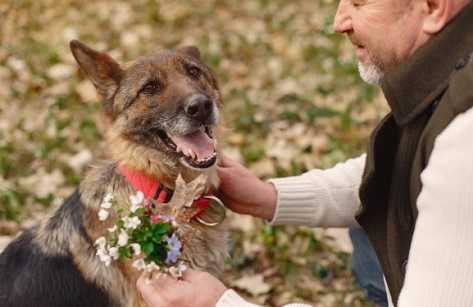10 Best Tips For Dog Training That You Can Easily Follow

It's a joy and happiness to have a well-trained and obedient dog around your home, friends, and family.
It isn't until the time you come to meet an untrained dog that you will be able to realize how much of a hassle and hindrance it can be to your enjoyment.
When your pet isn't properly trained, it can cause problems at home (cracked furniture, broken possessions, torn papers, and a house full of toilet paper bits!) as well as in public.
.jpg)
Taking your dog for walks, helping to bring them around the people and strangers, and having them respond when you call them are all made easier with a well-trained dog.
A well-trained dog is also safer, ensuring both your own and others' safety. This is particularly important when walking in public or near roads, cars, or other animals.
Tip #1 - Pay Attention to Your Dog
Learn to pay attention to your canine companion. Do not force your dog to say hello to another dog, animal, or person if he appears to be uncomfortable.
He's expressing his dissatisfaction for either a reason, and you should respect that. Addressing the issue can often lead to more serious issues in the future.
Tip #2 - Don't be stingy with your affection
Most people aren't shy about expressing their dissatisfaction with their dogs, but they tend to overlook the positive aspects. Big blunder.
When your dog is doing the right thing, make sure you reward him with lots of attention.
When he's been a good boy, tell him. Now is the time to lavish your attention and praise on them.
It's even acceptable to go a little overboard.

Tip #3 - Does He Really Like It?
The fact that the bag says "a treat all dogs love" does not guarantee that your dog will enjoy it. Some dogs are extremely picky about what they eat.
Hard and crunchy treats are usually less appealing to your dog than soft and chewy treats. Keep an eye out for what he likes.
Tip #4 - Tell him exactly what you'd like him to do
There's nothing wrong with saying "no" to your dog unless it doesn't provide him with enough information.
Instead of saying "no," tell your dog what you want him to do.
Because dogs don't generalize well, if your dog jumps up to say hello and you say no, he may decide to jump higher or to the left side of the room instead of the right.
Asking him to "sit" would be a better option. To avoid any confusion, tell him exactly what you really want him to do.
Tip #5 - Recognize how your dog learns
Dogs, like small children, learn a lot. They have the intelligence of a two-year-old human.
They only care about the immediate consequences. They start to comprehend our words as they grow older.
Some intelligent breeds can respond to up to 250 different stimuli.
Despite this, every dog responds more to the tone of our voice than to the words themselves.
Tip #6 - Be Patient
You are changing your dog's behavior when you train them (puppy or adult); it will consider taking more than one try. Start with the fundamentals (think, sit, stay) and progress from there.
You're conversing with an animal who doesn't understand your language.
Your dog is eager to learn, so give them time to grasp your expectations and commands. Please be patient!
.jpg)
Tip #7 - Never Hold It Against Your Dog
We already discussed the importance of patience, but your attitude toward training is equally important.
Try to maintain a positive attitude anytime you are training (and conversing with) your pet.
Never yell or scold your dog, and never blame him.
Dogs will be more likely to repeat positive actions if you provide positive encouragement even for the smallest accomplishments.
This is because they want to please you!
Tip #8 - When Should You Train?
Dogs (especially puppies) do have a lot of energy, and releasing some of it will help them listen and train much better.
Take your dog for a long walk or to the dog park before training to ensure they've had enough exercise and are ready to listen so you can get the most out of your time together.
Tip #9 - Make training sessions brief and enjoyable
A day's worth of short training sessions is more efficient than one or two long sessions of training.
You can decide to make your session can last anywhere between a few seconds and several minutes.
Training can be easily incorporated into your everyday routine.
.jpg)
Before you placed the food bowl down, for example, ask your dog to "come" and "sit." Before you throw the ball, ask her to lie down.
If you're trying to teach behavior, give it a few minutes of practice and always end on a positive note.
Training isn't intended to be a time-consuming process.
It's supposed to be enjoyable for both you and your pet. It doesn't matter if you teach your dog to "stay" or "shake."
Tip #10 - Maintain Consistency
It's critical to involve as many relatives’ members as possible when training your dog so that is all on the same page.
How on earth is your dog going to learn what you want if you tell him "off" when he jumps on the couch and then someone else tells him "down" while someone else lets him hang out up there?
Your success will be determined by your ability to maintain consistency.
Author Bio
This user has not submitted a user bio yet
Article Comments
No Comments!
At present there are zero comments on this article.
Why not be the first to make a comment?
Similar Articles
Sponsor
Search Articles
Experts Column
Latest Articles
Featured Articles
Most Popular Articles












